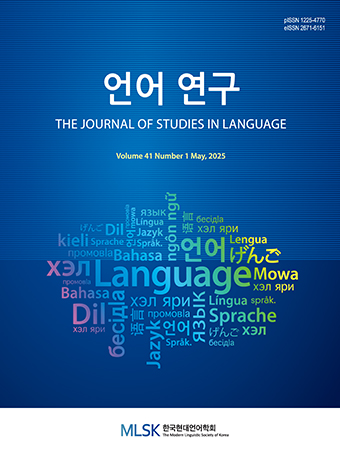Research Article
Abstract
References
Information
This paper tries to propose a new technique for identifying suicide notes that utilizes sentiment analysis. Because suicide notes are short in length, detecting signals of suicide can be challenging. The algorithm for sentiment analysis which is proposed is based on the probability of positive sentiments (PPS) rather than traditional categorical classifications. The original BERTLARGE model is modified so that we can calculate the PPS value of each sentence. In the analysis, 8 corpora will be used, 4 of which are suicide notes, and the others are ordinary texts. The PPS values are calculated for each sentence in the corpus using the BERTLARGE model. Ordinary texts have convexed parts around the score 50, whereas suicide notes demonstrate no such tendency.
- Chaski, C. 2012. Author Identification in the Forensic Setting. In L. Solan and P. Tiermsa (eds.), The Oxford handbook of forensic linguistics. Oxford, UK: Oxford University Press, 333-372. 10.1093/oxfordhb/9780199572120.013.0036
- Coulthard, M. and Johnson, A. 2016. An introduction to forensic linguistics. Cambridge, MA: Cambridge University Press.
- Desmet, M. and Hoste, V. 2013. Emotion Detection in Suicide Notes. Expert Systems with Applications 40.16, 6351-6358. 10.1016/j.eswa.2013.05.050
- Devlin, J., Chang, M., Lee, K., and Toutanova, K. 2019. BERT: Pre-training of Deep Bidirectional Transformers for Language Understanding. arXiv preprint 2019, arXiv:1810.04805.
- Durkheim, E. 1951. Suicide. New York: The Free Press.
- Edelman, A. and Renshaw, L. 1982. Genuine versus Simulated Suicide Notes: An Issue Revisited through Discourse Analysis. Suicide and Life-Threatening Behavior 12.2, 103-113. 10.1111/j.1943-278X.1982.tb00917.x 7179397
- Ghosh, S., Ekbal, A., and Bhattacharyya, P. 2020. CEASE, a Corpus of Emotion-Annotated Suicide Notes in English. In Proceedings of the 12th language resources and evaluation conference. Marseille, France, 11-16 May 2020, 1618-1626.
- Lee, Y. 2021. English Island Constraints Revisited: Experimental vs. Deep Learning Approach. English language and linguistics 27.3, 21-45.
- Lee, Y. 2022. Negative Polarity Items in English: A Deep Learning Model and Statistical Analysis. Korean journal of linguistics 47.1, 29-56.
- Lee, Y. and Joh, G. 2019. Identifying Suicide Notes Using Forensic Linguistics and Machine Learning. The Linguistic Association of Korean Journal 27.2, 171-191. 10.24303/lakdoi.2019.27.2.171
- Leenaars, A. 1988. Suicide notes. New York: Human Sciences Press.
- McCart, J., Finch, D., Jarman, J., Hickling, E., Lind, J., Richardson, M., Berndt, D., and Luther, S. 2012. Using Ensemble Models to Classify the Sentiment Expressed in Suicide Notes. Biomedical Informatics Insights 5.1, 77-85. 10.4137/BII.S8931 22879763 PMC3409473
- Mitchell, T. 1997. Machine learning. New York: McGraw Hill.
- Olsson, J. 2004. Forensic linguistics: An introduction to language, crime, and the law. London, UK: Continuum.
- Olsson, J. 2008. Forensic linguistics: An introduction to language, crime, and the law, 2nd edition. London, UK: Continuum.
- Pennebaker, J. and King, L. 1999. Linguistic Styles: Language Use as an Individual Difference. Journal of Personality and Social Psychology 77.6, 1296-1312. 10.1037/0022-3514.77.6.1296 10626371
- Pennebaker, W., Francis, E., and Booth, J. 2001. Linguistic inquiry and word count (LIWC): LIWC2001. Mahwah, NJ: Lawrence Erlbaum Associates.
- Pestian, J., Matykiewicz, P., Grupp-Phelan, J., Lavanier, A., Combs, J., and Kowatch, R. 2008. Using Natural Language Processing to Classify Suicide Notes. In Proceedings of the workshop on current trends in biomedical natural language processing (BioNLP’08). Columbus, Ohio, USA, 19 June 2008, 96-99. 10.3115/1572306.1572327 19006447
- Pestian, J., Matykiewicz, P., and Linn-Gust, M. 2012a. What’s in a Note: Construction of a Suicide Note Corpus. Biomedical Informatics Insights 5.5, 1-6. 10.4137/BII.S9042 22419877 PMC3299408
- Pestian, J., Matykiewicz, P., Linn-Gust, M., South, B., Uzuner, O., Wiebe, J., Cohen, B., Hurdle, J., and Brew, C. 2012b. Sentiment Analysis of Suicide Notes: A Shared Task. Biomedical Informatics Insights 5.1, 3-16. 10.4137/BII.S9042 22419877 PMC3299408
- Pestian, J., Nasrallah, H., Matykiewicz, P., Bennett, A., and Leenaars, A. 2010. Suicide Note Classification Using Natural Language Processing: A Cntent Aalysis. Biomedical Informatics Insights 3.3, 19-28. 10.4137/BII.S4706 21643548 PMC3107011
- Samuel, A. 1959. Some Studies in Machine Learning Using the Game of Checkers. IBM Journal 3, 210-229. 10.1147/rd.33.0210
- Shapero, J. 2011. The language of suicide notes. Unpublished doctoral dissertation, University of Birmingham, Birmingham, UK.
- Sheidman, E. and Faberow, N. 1963. Clues to suicide. New York: McGraw-Hill.
- Shneidman, S. 1996. The suicidal mind. Oxford, UK: Oxford University Press.
- Svartvik, J. 1968. The Evans statements: A case for forensic linguistics. Gothenburg, Sweden: University of Gothenburg Press.
- Tausczik, Y. and Pennebaker, J. 2010. The Psychological Meaning of Words: LIWC and Computerized Text Analysis Methods. Journal of Language and Social Psychology 29.1, 24-54. 10.1177/0261927X09351676
- Vaswani, A., Shazeer, N., Parmar, N., Uszkoreit, J., Jones, L., Gomez, A., Kaiser, L., and Polosukhin, I. 2017. Attention is all you need. arXiv preprint arXiv:1706.03762.
- Wang, W., Chen, L., Tan, M., Wang, S., and Sheth, A. 2012. Discovering Fine-Grained Sentiment in Suicide Notes. Biomedical Informatics Insights 5.1, 137-145. 10.4137/BII.S8963 22879770 PMC3409482
- Yang, H., Willis, A., De Roeck, A., and Nuseibeh, B. 2012. A Hybrid Model for Automatic Emotion Recognition in Suicide Notes. Biomedical Informatics Insights 5.1, 17-30. 10.4137/BII.S8948 22879757 PMC3409477
- Publisher :The Modern Linguistic Society of Korea
- Publisher(Ko) :한국현대언어학회
- Journal Title :The Journal of Studies in Language
- Journal Title(Ko) :언어연구
- Volume : 39
- No :1
- Pages :55-71
- DOI :https://doi.org/10.18627/jslg.39.1.202305.55




 The Journal of Studies in Language
The Journal of Studies in Language






